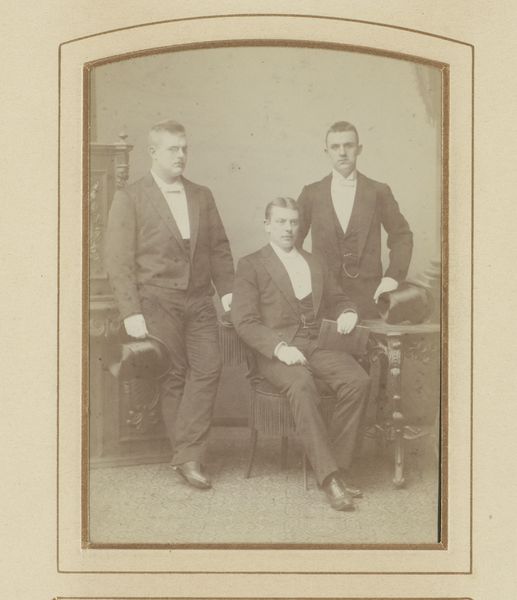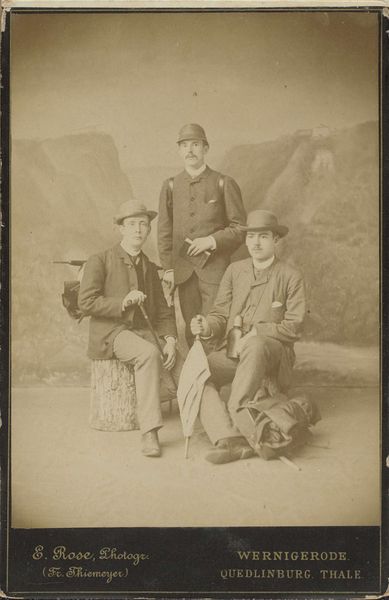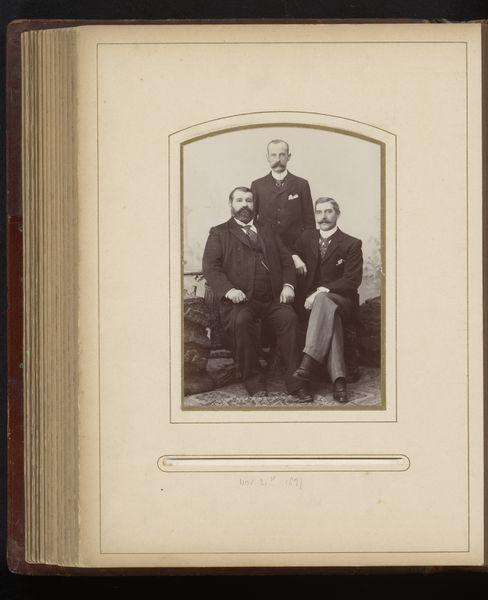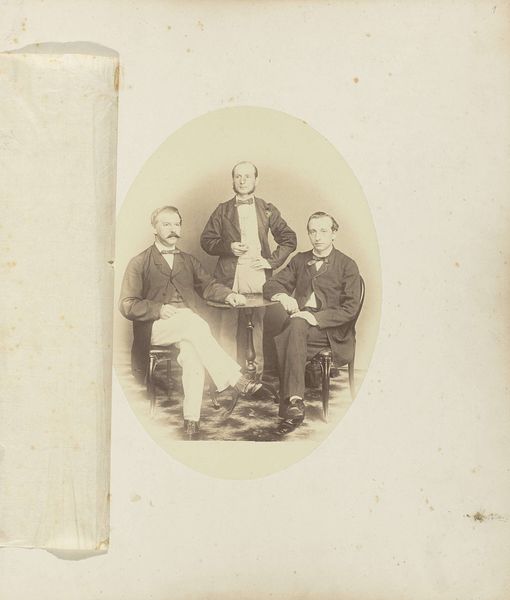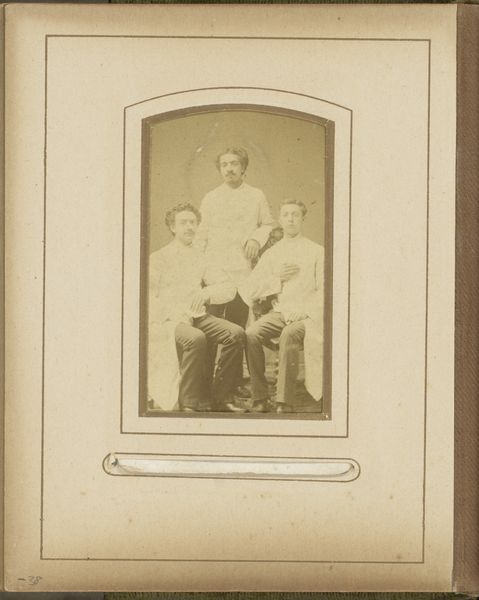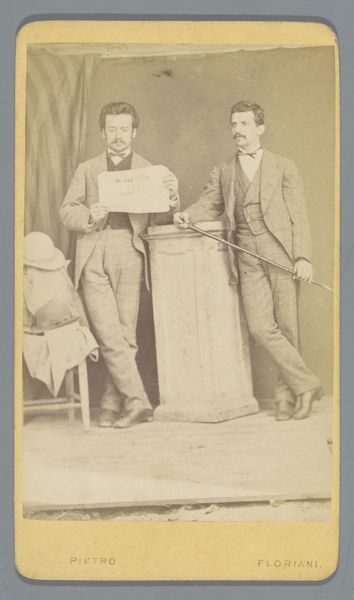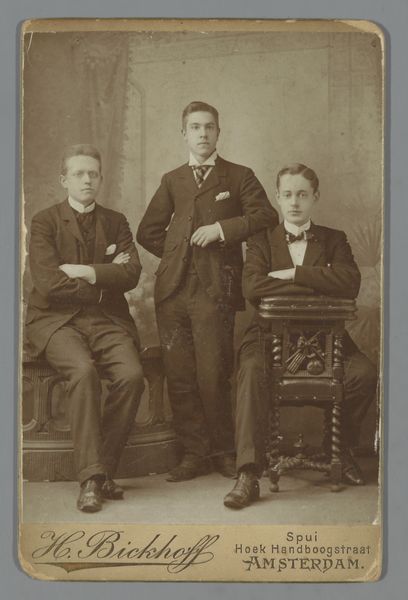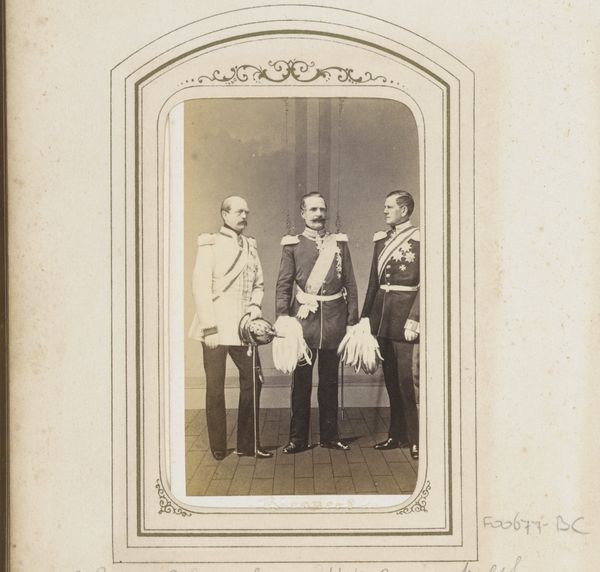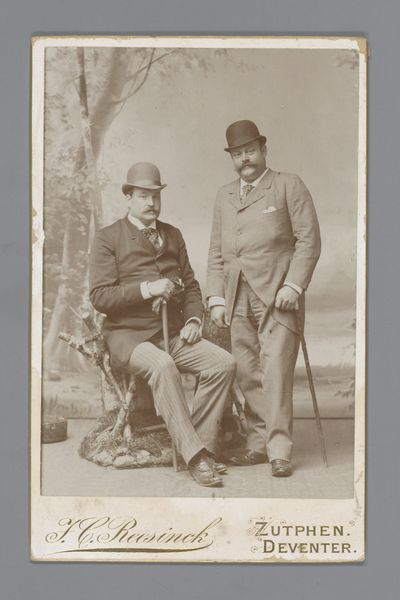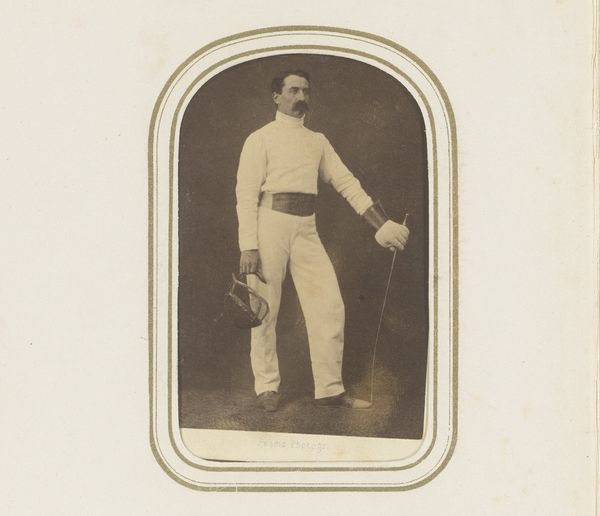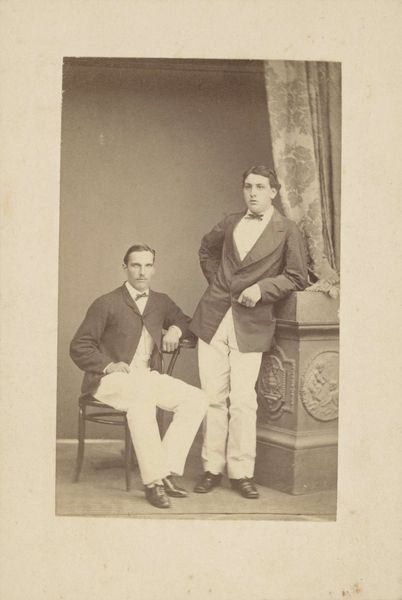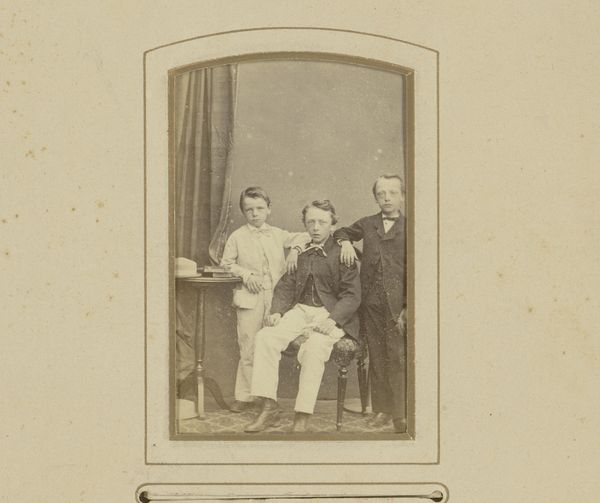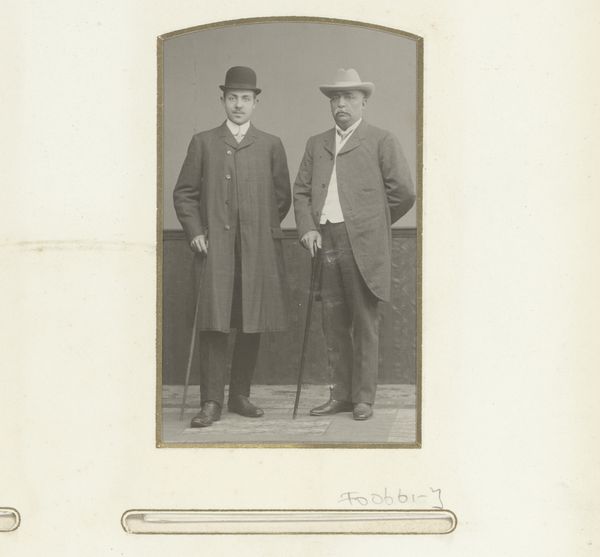
Portret van drie jonge mannen, waaronder A. F. Marmelstein (midden) c. 1890 - 1900
0:00
0:00
photography
#
portrait
#
toned paper
#
muted colour palette
#
asian-art
#
photography
#
historical fashion
#
framed image
Dimensions: height 165 mm, width 108 mm
Copyright: Rijks Museum: Open Domain
Curator: What an intriguing sepia photograph! At first glance, I see echoes of sepia dreams and perhaps, an early advertisement for Panama hats? Editor: It certainly strikes a colonial chord. The portrait, taken by Hung Wan Foong in Penang around 1890-1900, captures three young men in, shall we say, impeccable colonial attire. That pith helmet practically screams "rule Britannia." Curator: Impeccable indeed! There’s a formality here, of course, but also something quite charming. Look at their carefully cultivated mustaches and confident stances—it's as if they’re staging their own little theater of empire, don't you think? I wonder about the context: the tropical heat contrasting so sharply with those heavy wool suits... was it all terribly performative? Editor: Precisely! The very act of meticulously constructing this image speaks volumes about the performance of identity under colonial rule. Who were they trying to be, and for whom? Notice also the Chinese characters and English text below the image – a deliberate positioning that would invite viewers in different markets to appreciate. Curator: Oh, I love that perspective. But beyond the broader socio-political implications, what stories might be woven within? Perhaps each hat a symbol for individual dreams – the artist, the adventurer, the diplomat. Their outfits seem deliberately matched but look closely. A slightly different hat and jacket give us insight into their personality? I cannot help wonder, for example, what role each one of these individuals played in constructing, maintaining, or perhaps resisting the colonial infrastructure around them! Editor: An essential question! While their crisp white garments certainly hide a world of nuance and contradiction, those outfits are, ultimately, also blinding in how they homogenize individuality in favour of the 'civilized' appearance that colonial powers desperately needed to justify their violent project. This studio portrait of well-to-do men, therefore, invites crucial critical reflection – whose story has traditionally gone unphotographed and untold? Curator: A powerful point. The unrepresented stories framing the represented one. Now, when I look at the artwork, I'm thinking about where photography sits within this landscape of memory, and whether photography helps people preserve an otherwise ungraspable idea. Editor: That lingering question of photographic (in)accuracy should prompt us to reimagine alternative narratives within the context of coloniality.
Comments
No comments
Be the first to comment and join the conversation on the ultimate creative platform.
